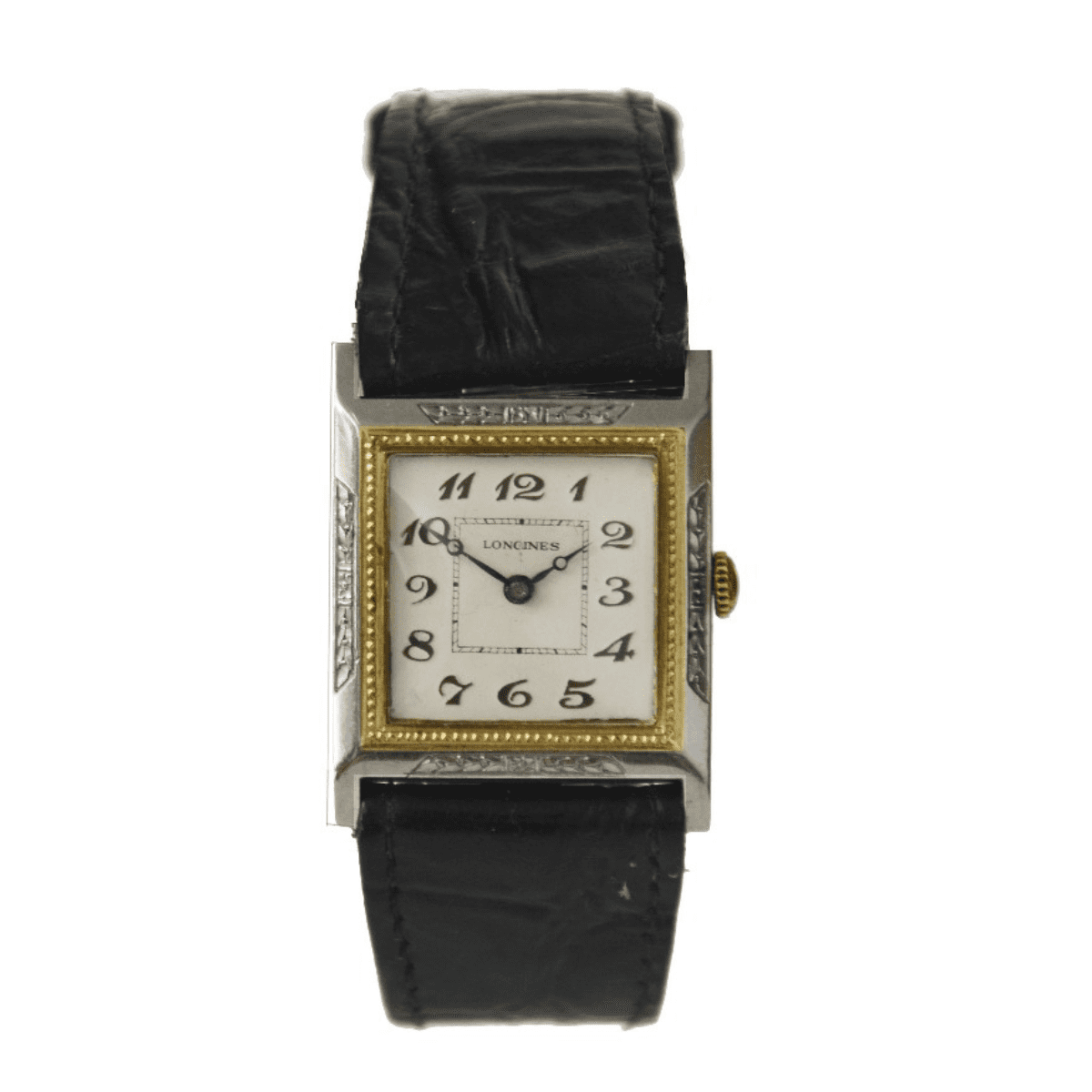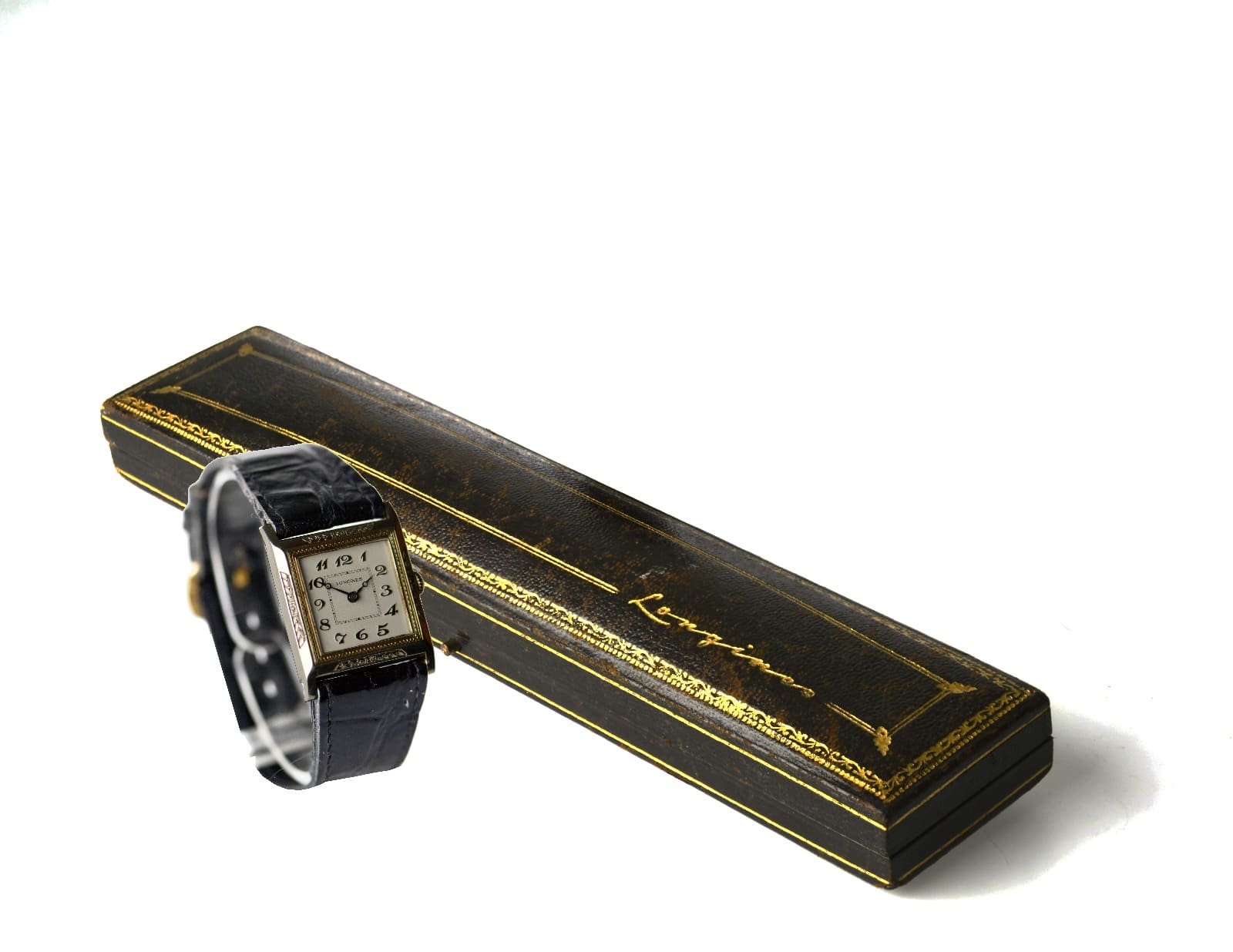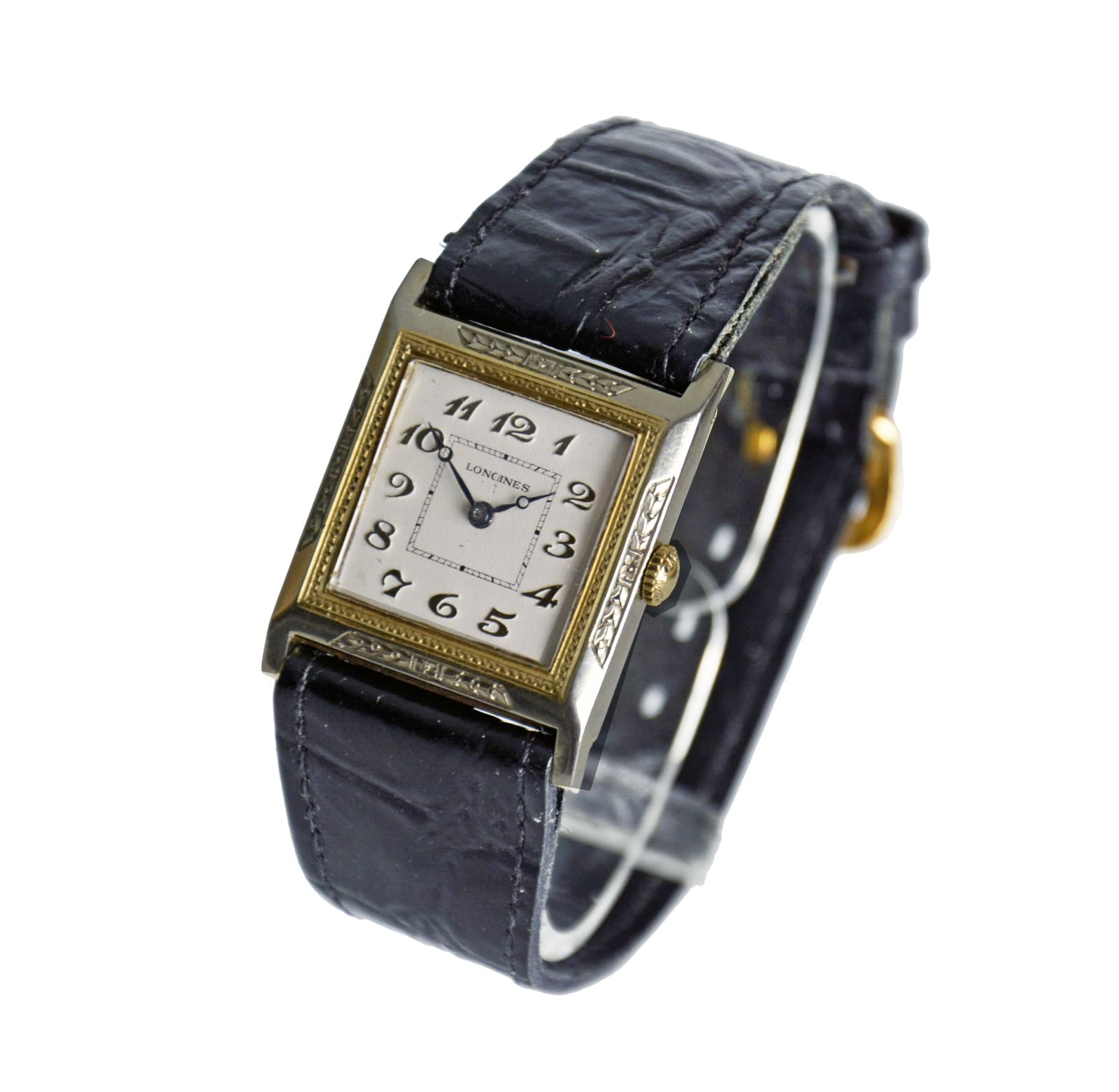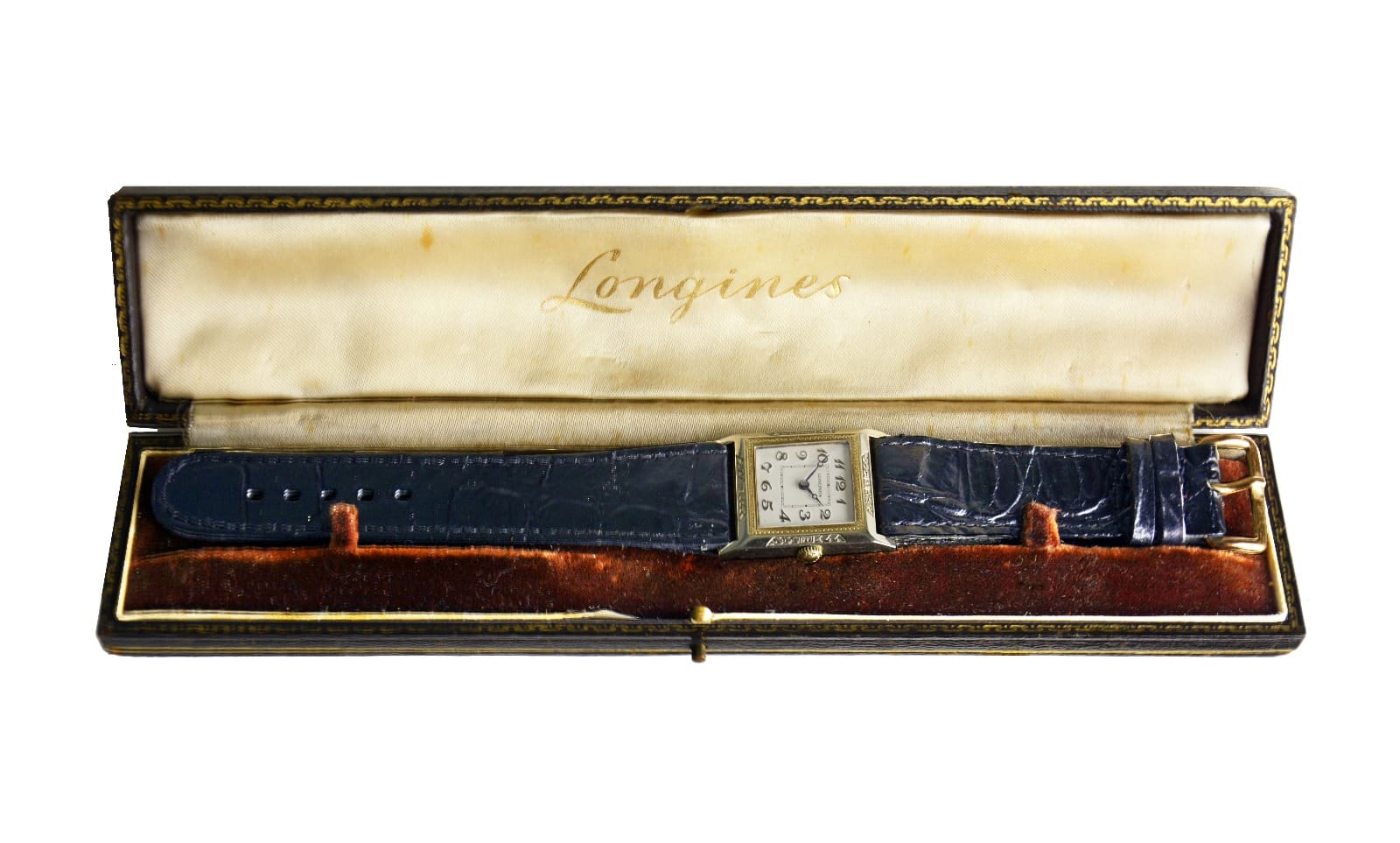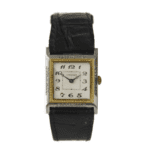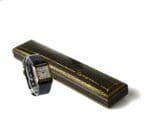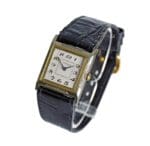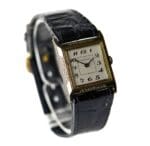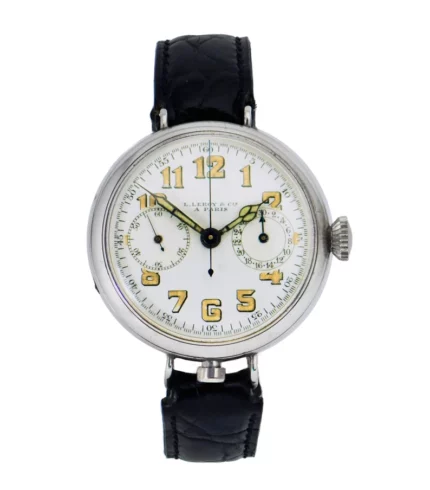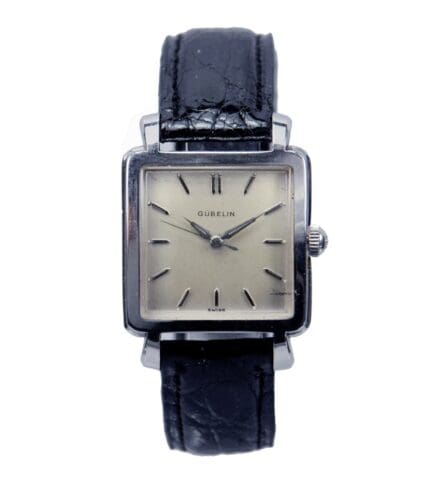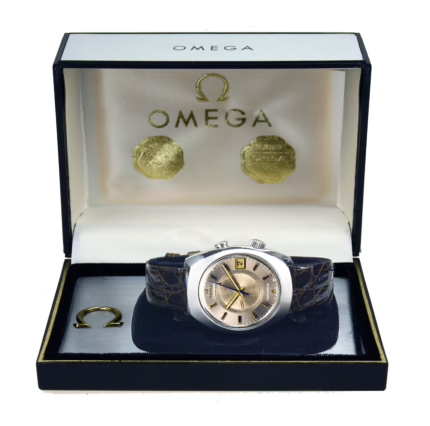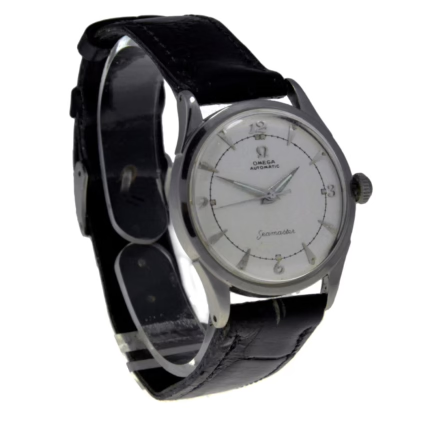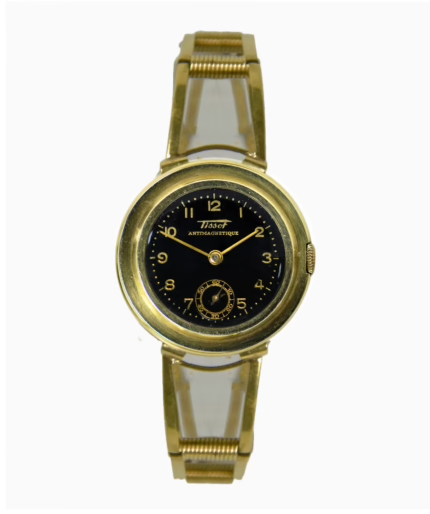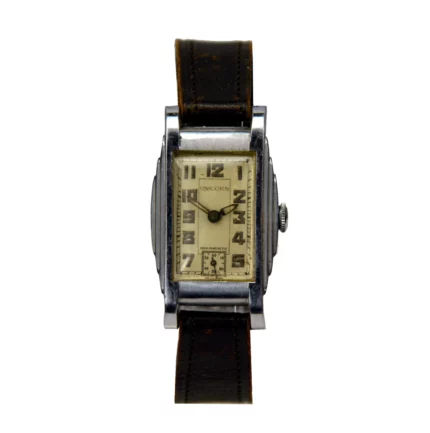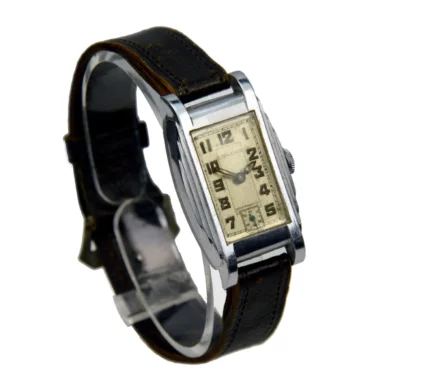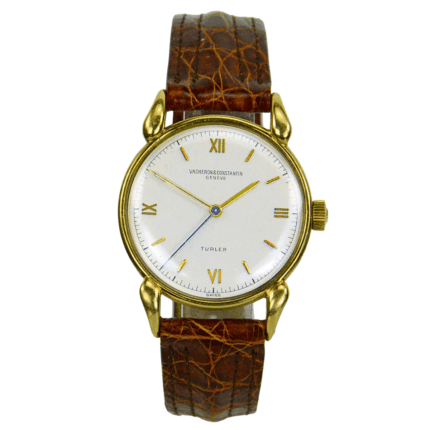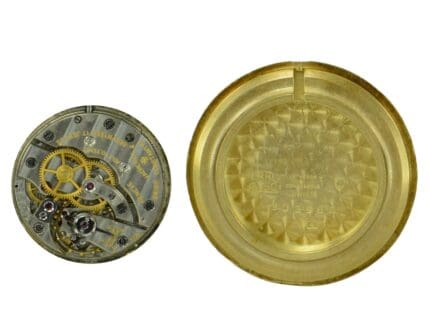Longines 14K Two-Tone White and Yellow Gold Tank Wristwatch, Swiss 1923
Step into the elegance of the Roaring Twenties with this exquisite Longines tank wristwatch, complete with original box. Crafted from luxurious 14K two-tone white and yellow gold, this rare timepiece is a testament to Longines’ pioneering innovation in watch design. As one of the first brands to introduce two-tone solid gold watches in the 1920s, Longines helped redefine the wristwatch for the modern era, departing from the military-style trench watches that still had dominated the post-World War I period.
The watch measures 25mm wide (excluding the winding crown) by 32mm long (lug-to-lug), with hand-engraved bezel as well as front panels—a testament to Longines’ renowned attention to detail and quality. Inside, a finely engineered high-grade calibre 10.86N manual wind movement with 16 jewels beats with the precision that Longines is celebrated for. The dial is adorned with raised golden Arabic numerals, subsidiary seconds, and elegant blued ‘Breguet’ style hands, all beautifully framed by the distinctive heavy solid gold case.
This is more than just a watch—it’s a piece of history, a stylish classic with a ‘look’ that remains as contemporary today as it was when it first left the factory over a century ago. Perfect for collector and connoisseur alike, this Longines wristwatch is a rare find that adds a touch of 1920s glamour to any collection—and to any wearer’s wrist!
- Case: Two-tone 14K white and yellow solid gold, fully hallmarked.
- Dimensions: 25mm (excluding the winding crown) x 32mm (lug to lug)
- Movement: Longines caliber 10.86N, high-grade, jeweled down to the centre wheel, fully signed Longines
- Winding Crown: Solid yellow gold signed Longines
- Condition: Excellent, fully serviced by aster Swiss watchmaker.
Shipping Worldwide via Courrier Service. Duty-free shipping within Europe.
Payment: If you prefer to pay by bank transfer or lay-away, please send us a message. Likewise, if check-out proves unable to process your credit card.
Longines Watch Company history
The history of Longines dates back to 1832, when Auguste Agassiz, along with two partners, founded a watchmaking workshop in the village of Saint-Imier, Switzerland. Originally operating under the name “Comptoir Raiguel Jeune,” in x1x9x3x8x 1838 the company became known as “Agassiz & Compagnie” after Agassiz took full control. This firm eventually evolved into the Longines Watch Company.
In its early years, like many watchmaking firms of the time, Agassiz & Compagnie’s production was decentralized. Various artisans crafted watch components in small home workshops, and these parts were transported from one specialized artisan to another until the watches gradually were fully assembled and delivered to the company’s headquarters.
In 1862, Auguste Agassiz handed over control of the company to his nephew, Ernest Francillon. Recognizing the inefficiencies and inconsistencies of dispersed production, Francillon centralized the entire watchmaking process under one roof. In 1867, he initiated the construction of a modern factory in an area called “Les Longines” (meaning “the long meadows” in the local dialect) on the outskirts of Saint-Imier. This move marked a new era in watch production, allowing for greater quality control and innovation. To protect against counterfeiters, Francillon established one of the earliest registered trademarks in the watch industry in 1889—the Winged Hourglass logo, which is still used by Longines today.
Longines began producing chronographs in 1878, and in 1912 introduced the first automatic timekeeping device for sports events, establishing itself as a leader in sports timekeeping—a role it has maintained throughout its history.
In the 1920s, Longines expanded its innovation into aviation, producing aviator watches and cockpit instruments. Among the most famous of these is the Hour Angle watch, designed in collaboration with aviator Charles Lindbergh in 1931, an essential tool for pilots navigating by celestial means. Following this success, Longines further solidified its reputation in aviation and exploration by creating the Weems Second-Setting Watch, developed with aviator Philip Van Horn Weems to enhance precise time-setting for pilots.
During World War II, Longines continued to supply military-grade watches, instruments, and timers, reinforcing its association with high-precision timekeeping and robust designs.
In the 1950s, Longines continued to innovate with the launch of the Conquest collection in 1954, one of the brand’s most successful lines. That same year, Longines introduced its first quartz clock for sports timing, paving the way for future quartz innovations.
In the 1960s, Longines entered the world of space exploration, with its chronographs being used by NASA astronauts during missions, including John Glenn’s first orbital flight around the Earth. Longines also developed the ultra-precise “Chronocinegines,” a camera-timer system that could record events at 1/100th of a second, used in sports events to capture precise finish times.
The 1970s brought significant challenges with the quartz revolution, but Longines adapted by embracing this technology. In 1969, the brand introduced the Longines Ultra-Quartz, one of the first quartz wristwatches on the market. Longines continued to innovate with the development of the VHP (Very High Precision) quartz movement, known for its accuracy.
Throughout the 1980s, Longines maintained its focus on sports timing, particularly in equestrian events, gymnastics, and other major competitions, while reinforcing its position in the luxury watch market with a commitment to elegance and precision.
Since the 1990s, Longines has embraced its heritage by reviving classic and iconic designs, such as the Legend Diver and Heritage Military collections, catering to the growing interest in vintage and heritage-inspired watches. The company has also continued to innovate in precision timekeeping with the development of new automatic movements like the L888, known for its improved power reserve and reliability.
Today, Longines is celebrated for its blend of tradition, elegance, and innovation. The brand remains a significant player in luxury watchmaking, with a strong presence in sports timekeeping and a dedication to preserving its historical legacy while embracing modern advancements.


